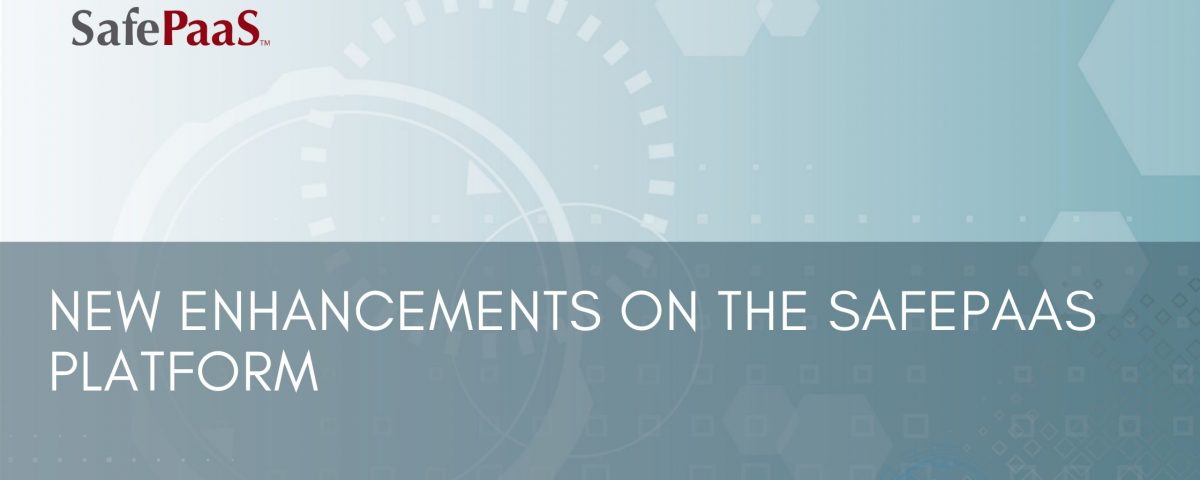New Enhancements on the SafePaaS platform


New Enhancements on the SafePaaS platform
SafePaaS continues to provide innovative capabilities on the platform to meet the growing needs of our customers. In the third quarter, we released 27 new enhancements across product suites including:
- Enhanced API Services
- Simplified data transfer for Oracle E-Business Suite
- Configuration change tracking for Oracle ERP Cloud
- Access Governance for OCI
Enhanced API services
Securely Bring in Data from any Application, ERP, and Infrastructure using enhanced API services. DataProbeETL™ is a versatile ETL tool that provides secure and encrypted data integration services. DataProbeELT™ allows you to extract, transform and load data into SafePaaS from external data sources, including on-premise ERP database and cloud enterprise applications as well as IDM and ITSM systems. DataProbeETL™ supports many popular APIs standards to integrate with multiple data sources, including JDBC, SOAP Web Services, REST Services, and flat file upload.
Customers can now use the POST API services to transfer security, centrifugation, master data, and transaction snapshots from any enterprise application using meta-data objects available with DataProbeETL™. Customers can also add new data sources using object management capabilities, including data discovery and sampling methods.
Simplified data transfer for Oracle E-Business Suite
Enhanced JDBC services enable on-premise ERP customers to schedule automated data synchronization from SafePaaS. Customers that are continuing to operate on-premise ERP systems such as Oracle E-Business Suite, PeopleSoft, SAP and JD Edwards can automate the ERP security snapshot upload process within SafePaaS to reduce manual efforts required to extract the snapshots using database scripts and load the data into SafePaaS. Many customers perform this task weekly or monthly to ensure compliance with Segregation of Duty policies. Some customers have automated this step using the batch processing tools such as secure File Transfer Protocol (sFTP) and Concurrent Managers in Oracle EBS.
JDBC (Java Database Connectivity) is the Java API that manages connecting to a database, issuing queries and commands, and handling result sets obtained from the database. TLS/SSL is configured using connection properties for clients connecting via the JDBC interface.
Configuration change tracking for Oracle ERP Cloud
Oracle ERP Cloud customers face a number of challenges when it comes to maintaining audit policies. The challenges with audit policies in the cloud include the following: READ MORE
Access Governance for OCI
Cloud governance is an ongoing problem that burdens security, compliance, and management. As organizations move to Oracle Cloud Infrastructure to run their on-premise applications such as E-Business Suite in the Cloud, they need to ensure that access to OCI and all applications on OCI is secure and governed. The problem is that infrastructure accounts, administrative accounts and middle-layer accounts that are used by technical teams are accounts with high risk privileges, in other words, they are “keys to the kingdom” accounts. Access to these accounts needs to be governed, monitored, and /or certified to ensure risk is mitigated. SafePaaS can connect to OCI and provide access governance for these accounts that if not monitored, can cause chaos.
Recommended Reading

Fall Newsletter 2022
Read about the latest exciting enhancements on the SafePaaS platform including multi-cloud security and governance, access governance for Oracle Cloud Infrastructure, Change Tracking for Oracle ERP Cloud and much more...

Multi-cloud security and governance
There are many benefits to a multi-cloud strategy, but operating in multiple clouds also introduces complexity. If not managed carefully, a multi-cloud architecture can rob the cost-saving component of the cloud and hinder your performance goals. Multi-cloud vulnerabilities can manifest because each Cloud provider has a different method of managing identity, privileges, and entitlements.

Reduce Cloud ERP Risks with Application Configuration Monitoring
Many steps are involved in cloud implementations, and configuration is one of the most critical. Correctly setting your configurations leads to better user satisfaction when data automatically fills in frequently used fields. Management also benefits from the proper setting of configurations because the right decisions are set as the application's default.

